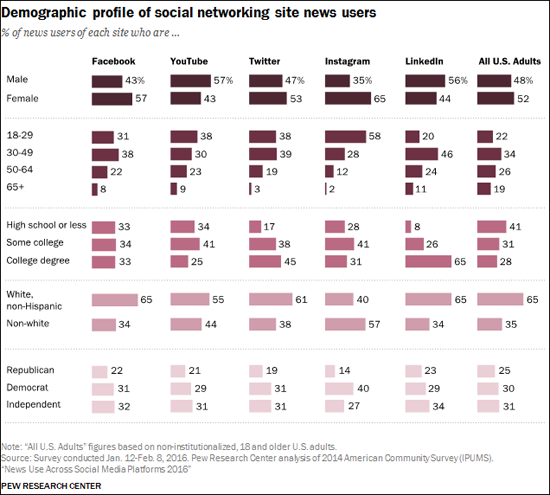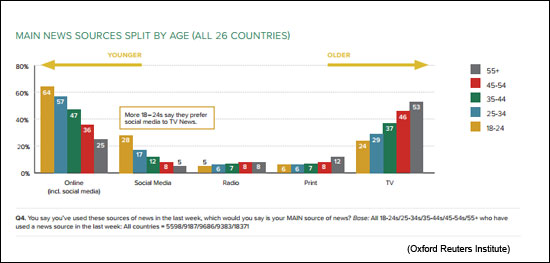The relationship between news publishers and the large social network platform companies continues to evolve rapidly. Even as observers have warned about the perils of losing control of distribution of content, recent news that Facebook is beginning to pay news companies to produce video content may inaugurate a new era of collaboration. Twitter, Google/YouTube and Snapchat, which has added a reported 75 editorial personnel, also have been making various moves and adjustments to feature news and to design pathways to media content.
All of these changes can be dizzying for journalists and media outlets that still are struggling to figure out how to make up for declining advertising revenue. But several recent reports reveal some key data that can put the relationship between publishers and platforms into perspective.
The Pew Research Center has released its “State of the News Media 2016” report, which includes data from an earlier report this year on news consumers’ habits with regard to social media:
The Oxford Reuters Institute for the Study of Journalism released its own 2016 report on the state of digital news. That report includes detailed information about news consumption habits across 26 countries and puts the role of social media in some context:
And the analytics firm Parse.ly has continued to release reports on how platforms such as Twitter are affecting engagement with news, in addition to providing overall numbers that show how social media have surpassed web searches as a leading source of referral traffic to major news sites:
Related research: For recent perspective, see charts on this and related issues from 2015. Also, see a recent roundup of scholarly papers and reports on digital news and social media.




Expert Commentary